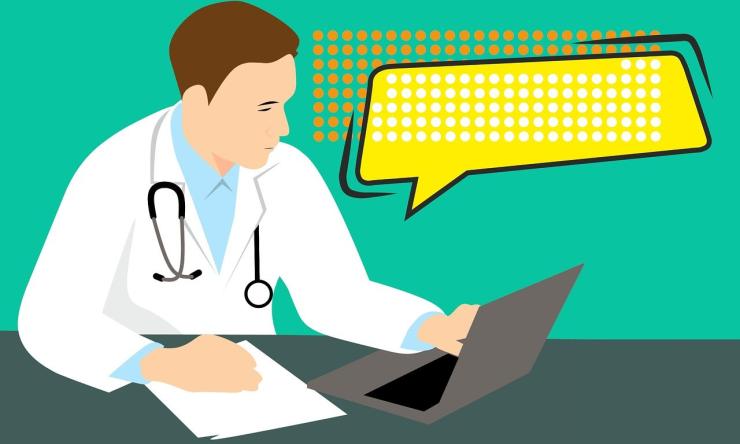Similar content being viewed by others
Spliced: Boundary-work and the establishment of human gene therapy
Article 28 June 2017
Courtney Addison
When CRISPR Meets Fantasy: Transhumanism and the Military in the Age of Gene Editing
Chapter © 2021
Gene Therapy and Germline Cells Research
Updated April 13th, 2024
Advanced Search : OMIM, Clinical Synopses, Gene Map
OMIM®
An Online Catalog of Human Genes and Genetic Disorders
OMIM search

Need help? : Example Searches, OMIM Search Help, OMIM Video Tutorials
Mirror site : https://mirror.omim.org
OMIM is supported by a grant from NHGRI, licensing fees, and generous contributions from people like you.
Make a donation!



OMIM is intended for use primarily by physicians and other professionals concerned with genetic disorders, by genetics researchers, and by advanced students in science and medicine. While the OMIM database is open to the public, users seeking information about a personal medical or genetic condition are urged to consult with a qualified physician for diagnosis and for answers to personal questions.
OMIM® and Online Mendelian Inheritance in Man® are registered trademarks of the Johns Hopkins University.
Copyright® 1966-2024 Johns Hopkins University.
Graduate & Professional Education
Baylor’s nationally ranked graduate and professional education programs equip students to bring inquiry and innovation, informed by a Christian perspective, to bear on real-world concerns as they pursue their call to lead in academia, the boardroom, the medical profession, the lab, and the studio.
Playing God? Religious Perspectives on Manipulating the Genome
The Human Genome Project (HGP) is a remarkable medical science breakthrough that enables the understanding of genetics and the intervention of human health. An individual’s health is influenced by physical, emotional, social, intellectual, and religious factors. Among these, religious beliefs shape our thinking on cloning, stem cells, and gene editing, affecting healthcare decisions and the motivation for seeking treatment. Is the human genome sacred? Does editing it violate the idea that we’re made in God’s image or allow us to “play God”? Understanding the perspectives behind the fundamental religious doctrines of Islam, Christian, Hindu, and Buddhist on gene editing/therapy in somatic and germline cells would ensure a right balance between geneticists and theologians in providing the best healthcare while catering to individual beliefs.
https://link.springer.com/article/10.1007/s10943-022-01497-6
https://link.springer.com/journal/10943
Pathogenic variants in USP7 cause a neurodevelopmental disorder with speech delays, altered behavior, and neurologic anomalies
Conflict of interest statement
E.T., J.J., F.M., I.M.W., and R.E.P. are employees of GeneDx, Inc., a wholly owned subsidiary of OPKO Health, Inc. The Department of Molecular and Human Genetics at Baylor College of Medicine receives revenue from clinical genetic testing conducted at Baylor Genetics Laboratories, including chromosomal microarray and exome sequencing. The other authors declare no conflicts of interest.
https://pubmed.ncbi.nlm.nih.gov/30679821/
Purpose: Haploinsufficiency of USP7, located at chromosome 16p13.2, has recently been reported in seven individuals with neurodevelopmental phenotypes, including developmental delay/intellectual disability (DD/ID), autism spectrum disorder (ASD), seizures, and hypogonadism. Further, USP7 was identified to critically incorporate into the MAGEL2-USP7-TRIM27 (MUST), such that pathogenic variants in USP7 lead to altered endosomal F-actin polymerization and dysregulated protein recycling.
Methods: We report 16 newly identified individuals with heterozygous USP7 variants, identified by genome or exome sequencing or by chromosome microarray analysis. Clinical features were evaluated by review of medical records. Additional clinical information was obtained on the seven previously reported individuals to fully elucidate the phenotypic expression associated with USP7 haploinsufficiency.
Results: The clinical manifestations of these 23 individuals suggest a syndrome characterized by DD/ID, hypotonia, eye anomalies,feeding difficulties, GERD, behavioral anomalies, and ASD, and more specific phenotypes of speech delays including a nonverbal phenotype and abnormal brain magnetic resonance image findings including white matter changes based on neuroradiologic examination.
Conclusion: The consistency of clinical features among all individuals presented regardless of de novo USP7 variant type supports haploinsufficiency as a mechanism for pathogenesis and refines the clinical impact faced by affected individuals and caregivers.
Keywords: USP7; corpus callosum thinning; neurodevelopment; speech delay; white matter paucity.
Defined Engineered Human Myocardium With Advanced Maturation for Applications in Heart Failure Modeling and Repair
Malte Tiburcy et al. Circulation. 2017.Show details Abstract PubMed PMID Full text linksCite
Background: Advancing structural and functional maturation of stem cell-derived cardiomyocytes remains a key challenge for applications in disease modeling, drug screening, and heart repair. Here, we sought to advance cardiomyocyte maturation in engineered human myocardium (EHM) toward an adult phenotype under defined conditions.
Methods: We systematically investigated cell composition, matrix, and media conditions to generate EHM from embryonic and induced pluripotent stem cell-derived cardiomyocytes and fibroblasts with organotypic functionality under serum-free conditions. We used morphological, functional, and transcriptome analyses to benchmark maturation of EHM.
Results: EHM demonstrated important structural and functional properties of postnatal myocardium, including: (1) rod-shaped cardiomyocytes with M bands assembled as a functional syncytium; (2) systolic twitch forces at a similar level as observed in bona fide postnatal myocardium; (3) a positive force-frequency response; (4) inotropic responses to β-adrenergic stimulation mediated via canonical β1– and β2-adrenoceptor signaling pathways; and (5) evidence for advanced molecular maturation by transcriptome profiling. EHM responded to chronic catecholamine toxicity with contractile dysfunction, cardiomyocyte hypertrophy, cardiomyocyte death, and N-terminal pro B-type natriuretic peptide release; all are classical hallmarks of heart failure. In addition, we demonstrate the scalability of EHM according to anticipated clinical demands for cardiac repair.
Conclusions: We provide proof-of-concept for a universally applicable technology for the engineering of macroscale human myocardium for disease modeling and heart repair from embryonic and induced pluripotent stem cell-derived cardiomyocytes under defined, serum-free conditions.
Keywords: heart failure; models, cardiovascular; regeneration; stem cells; tissue engineering.
Conflict of Interest Disclosures
A patent concerning serum-free EHM generation for applications in drug screens and heart repair has been filed by the University of Goettingen with M.T., J.H., and W.H.Z. listed as inventors. W.H.Z. is founder and scientific advisor of myriamed GmbH and Repairon GmbH.
Founded in 1737 in the Age of Enlightenment, the University is committed to the values of social responsibility of science, democracy, tolerance and justice. It offers a comprehensive range of subjects across 13 faculties: in the natural sciences, humanities, social sciences and medicine. With about 30,000 students and more than 210 degree …
Human Genome Sequencing Center Clinical Lab

The HGSC Clinical Laboratory (HGSC-CL) is the CAP/CLIA certified molecular diagnostic laboratory operating within the Human Genome Sequencing Center at Baylor College of Medicine.
With a commitment to improving health care through genomic testing, HGSC-CL offers clinical testing services in support of large-scale clinical sequencing efforts.
- Baylor College of Medicine
- News
- Using generative AI assistant to interpret pharmacogenetic test results

Similar content being viewed by others
Spliced: Boundary-work and the establishment of human gene therapy
Article 28 June 2017
Courtney Addison
When CRISPR Meets Fantasy: Transhumanism and the Military in the Age of Gene Editing
Chapter © 2021
Hinterlasse einen Kommentar